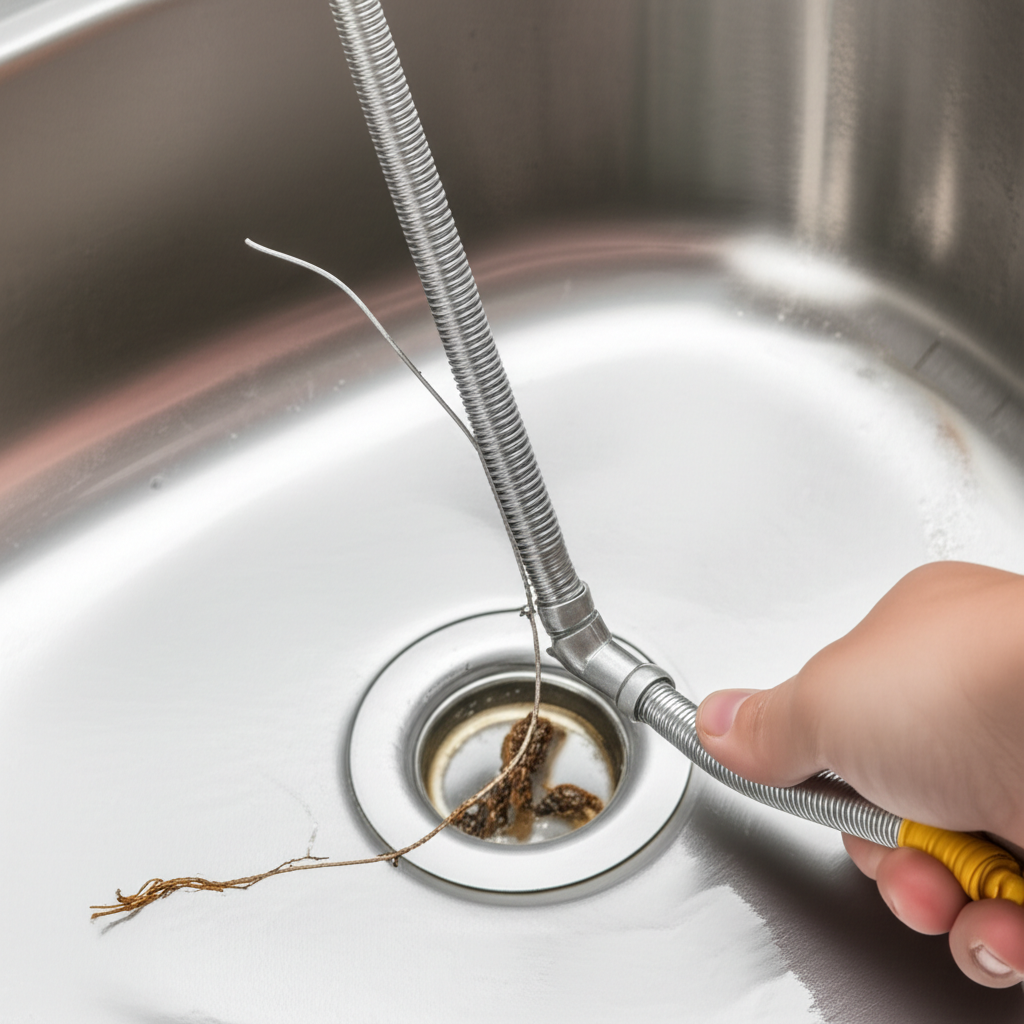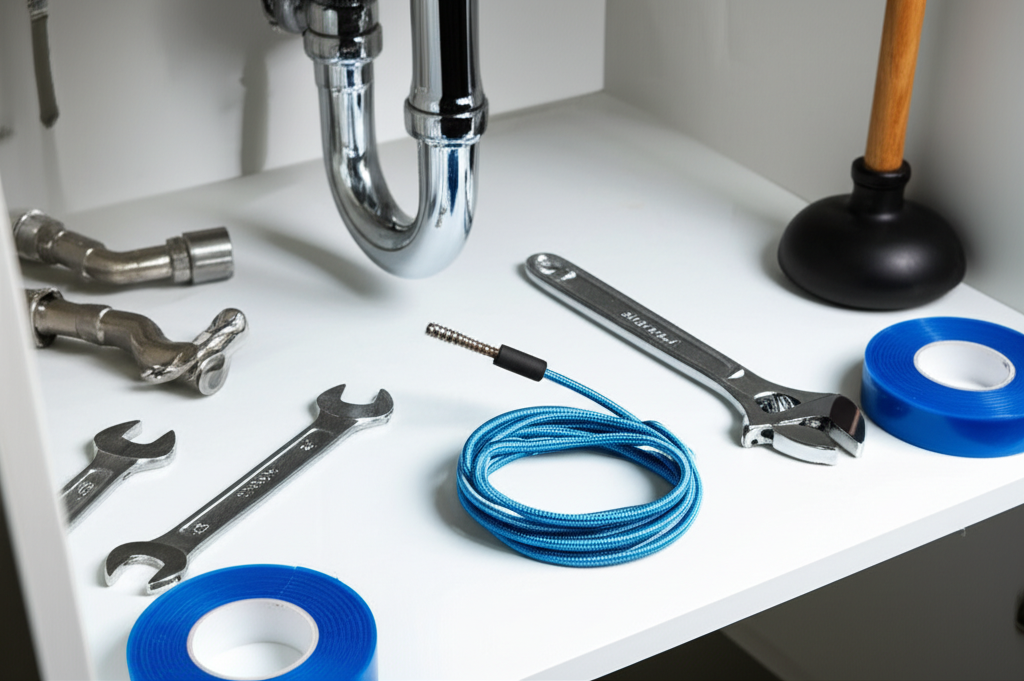Your 26-Inch Plumbing Snake: The Genius Effortless Fix for Clogs
Got a stubborn clog? Don’t despair! A common clog in your sink or tub can be frustrating. But the good news is you might already have the perfect tool to tackle it. This little wonder, often called a drain snake or auger, is surprisingly effective. We’ll walk through how to use your 26-inch plumbing snake to clear that annoying blockage. Get ready to feel like a plumbing hero!
Why Your 26-Inch Plumbing Snake is a DIY Dream

When a drain is blocked, water backs up. This can make simple tasks like washing dishes or taking a shower really difficult. Many people immediately reach for chemical drain cleaners. While they might seem quick, these chemicals can be harsh. They can damage your pipes and are not good for the environment. Plus, they don’t always get to the root of the problem.
That’s where your 26-inch plumbing snake, or hand auger, shines. It’s a simple, mechanical tool designed to grab or break up clogs. Unlike chemicals, it physically removes the obstruction. This makes it a safer and more eco-friendly option. It’s also incredibly satisfying to use! You can often fix the problem yourself without needing to call a plumber. This saves you time and money.
Understanding Your 26-Inch Plumbing Snake
A 26-inch plumbing snake is essentially a flexible metal cable. One end has a handle or a crank. The other end has a coiled tip, often called a “bulb” or “corkscrew” head. This head is designed to catch or break apart debris in the pipe.
How it works: You feed the cable into the drain until you hit resistance. This resistance is usually the clog. Then, you turn the handle. This rotates the cable and the clog-grabbing head. As you crank, the head can hook onto hair, soap scum, or other gunk, or it can break the clog into smaller pieces that can be flushed away. It’s a direct, physical attack on the blockage!
Tools You’ll Need (Besides Your Snake!)
Before you start, gather a few helpful items. Having everything ready makes the job go smoothly.
- Your 26-inch Plumbing Snake: The star of the show!
- Gloves: To keep your hands clean and protected.
- Bucket or Old Towels: To catch any water or gunk that might come out.
- Screwdriver (possibly): If you need to remove a drain cover or strainer first.
- Flashlight: To see into the drain if needed.
- Heavy-duty garbage bags: For any unpleasant debris you pull out.
Step-by-Step Guide: Using Your 26-Inch Plumbing Snake
Follow these steps carefully to banish that clog. Remember, patience is key! If you feel unsure, it’s always okay to stop and consult a professional. Safety first!
-
Preparation is Key
Put on your gloves. Place a bucket or old towels under the drain area. This will catch any drips or messy surprises. If your sink or tub has a pop-up stopper, you might need to remove it first. Often, these stoppers can be unscrewed or lifted out. Sometimes, a screwdriver is needed for the linkage. Check the specific type of stopper you have.
-
Insert the Snake
Carefully feed the tip of the 26-inch plumbing snake into the drain opening. Gently push it into the pipe. You want to avoid forcing it. If you meet resistance early on, it might be a bend in the pipe or the stopper linkage. Try wiggling it gently. The goal is to get the cable as far into the drainpipe as possible.
-
Reach the Clog
Slowly push the snake further into the drain. Keep feeding it until you feel definite resistance. This feeling is usually the snake’s head bumping into the clog itself. It won’t feel like a sharp stop, but more like hitting something soft or dense. You might feel the cable bend or give a little.
-
Engage the Clog
Once you feel the clog, stop pushing. Now, it’s time to crank! Hold the snake handle steady and start rotating it clockwise. As you turn, the snake’s head will spin. This movement helps it to either hook onto the clog material (like hair and grease) or break the clog into smaller pieces.
-
Pull the Snake Out
After cranking for a bit, gently pull the snake back out. You might be able to pull the clog out with the snake if it hooked onto it. You might also just break it up enough for the water to flush it away. Be prepared for whatever might come out with the snake! Use the garbage bags and towels to clean up any debris.
-
Flush the Drain
Once you’ve removed the snake, run hot water down the drain for a few minutes. This helps to clear out any remaining debris. If the water flows freely, congratulations! You’ve cleared the clog. If it’s still slow, you might need to repeat the process or try a slightly different technique with the snake.
Tips for Success and Troubleshooting
Even with the best tools, plumbing can be tricky. Here are some tips to make your snake job easier and what to do if things don’t go perfectly right away.
- Go Slow: Don’t rush the process. Gentle pressure and steady cranking are more effective than brute force.
- Listen and Feel: Pay attention to what the snake is telling you. Different resistances can indicate different types of clogs or pipe features.
- Rotate Both Ways: If clockwise cranking doesn’t seem to work, try the other direction. Sometimes, the clog material can wedge itself differently.
- Multiple Passes: For tough clogs, you might need to insert and retrieve the snake several times.
- Know When to Stop: If you can’t feel the clog, or if the snake seems stuck and won’t budge, don’t force it. You could damage your pipes.
Here’s a quick look at common clog causes and how your snake can help:
| Common Clog Cause | How the Snake Helps |
|---|---|
| Hair and Soap Scum | The snake’s tip can snag clumps of hair or break apart hardened soap residue. |
| Grease and Food Particles | Cranking can break up fatty deposits or push small food bits through. |
| Small Objects | Sometimes, the snake can hook onto small lost items. |
When to Call a Professional Plumber
While your 26-inch plumbing snake is a great tool, it’s not a magic wand for every situation. There are times when it’s best to step back and call a licensed plumber. This is especially true if:
- The Clog Persists: If you’ve tried using the snake multiple times and the drain is still slow or completely blocked, the clog might be too deep or too severe for your tool.
- Multiple Drains are Clogged: If you notice several drains in your home are slow or blocked, it could indicate a problem further down in your main sewer line. This requires professional equipment and expertise. You can learn more about sewer line issues from resources like the EPA’s guidance on protecting your home’s plumbing.
- You Suspect Pipe Damage: If you hear strange noises, smell sewer odors, or suspect your pipes might be damaged, stop immediately. Forcing a snake could worsen the problem.
- You’re Uncomfortable: Plumbing can be messy and sometimes a bit daunting. If at any point you feel uncomfortable or unsure, it’s always the safest bet to call in a professional. They have specialized tools and the experience to handle any plumbing issue safely and effectively.
Frequently Asked Questions (FAQs)
- Q1: How far can a 26-inch plumbing snake reach?
-
A 26-inch snake is best for clogs that are relatively close to the drain opening, typically within a few feet. They are excellent for sink and tub drains but may not reach clogs deep in main sewer lines.
- Q2: Can I use my snake in a toilet?
-
While some small augers are designed for toilets, a standard 26-inch hand snake might not be ideal. Toilet clogs often require a specialized toilet auger to avoid scratching the porcelain bowl. Always use the right tool for the job.
- Q3: What should I do if the snake won’t go around a bend in the pipe?
-
If you encounter a bend and the snake won’t pass, try rotating the snake gently while pushing. Sometimes, bending the snake slightly (but not sharply) can help it navigate the turn. However, never force it, as this can damage the pipe or the snake.
- Q4: How do I clean the snake after use?
-
After pulling the snake out, wipe it down thoroughly with old rags or paper towels. Rinse it with water if possible, especially if you pulled out debris. Allow it to dry completely before storing it to prevent rust.
- Q5: What’s the difference between a 26-inch snake and a longer drain auger?
-
A 26-inch snake is a short, manual tool for minor clogs near the drain opening. Longer drain augers, often powered or much longer manual versions, are designed for deeper clogs further down the pipe. The length determines how far into the plumbing system you can reach.
- Q6: Is it safe to use hot water after snaking?
-
Yes, running hot or boiling water after snaking is generally safe and recommended. It helps to flush away any remaining debris and grease that the snake may have loosened. Just make sure your pipes are in good condition, as very old pipes might be more sensitive to extreme temperatures.
Conclusion: Reclaim Your Drains!
Using your 26-inch plumbing snake can be a surprisingly effective and empowering way to deal with common drain clogs. By understanding how it works and following these simple steps, you can often resolve the issue yourself, saving time and money. Remember to work patiently and safely.
Don’t let clogs get the best of you! With your trusty 26-inch snake, you’re equipped to tackle many everyday plumbing annoyances and keep your home’s water flowing freely. Happy snaking!

